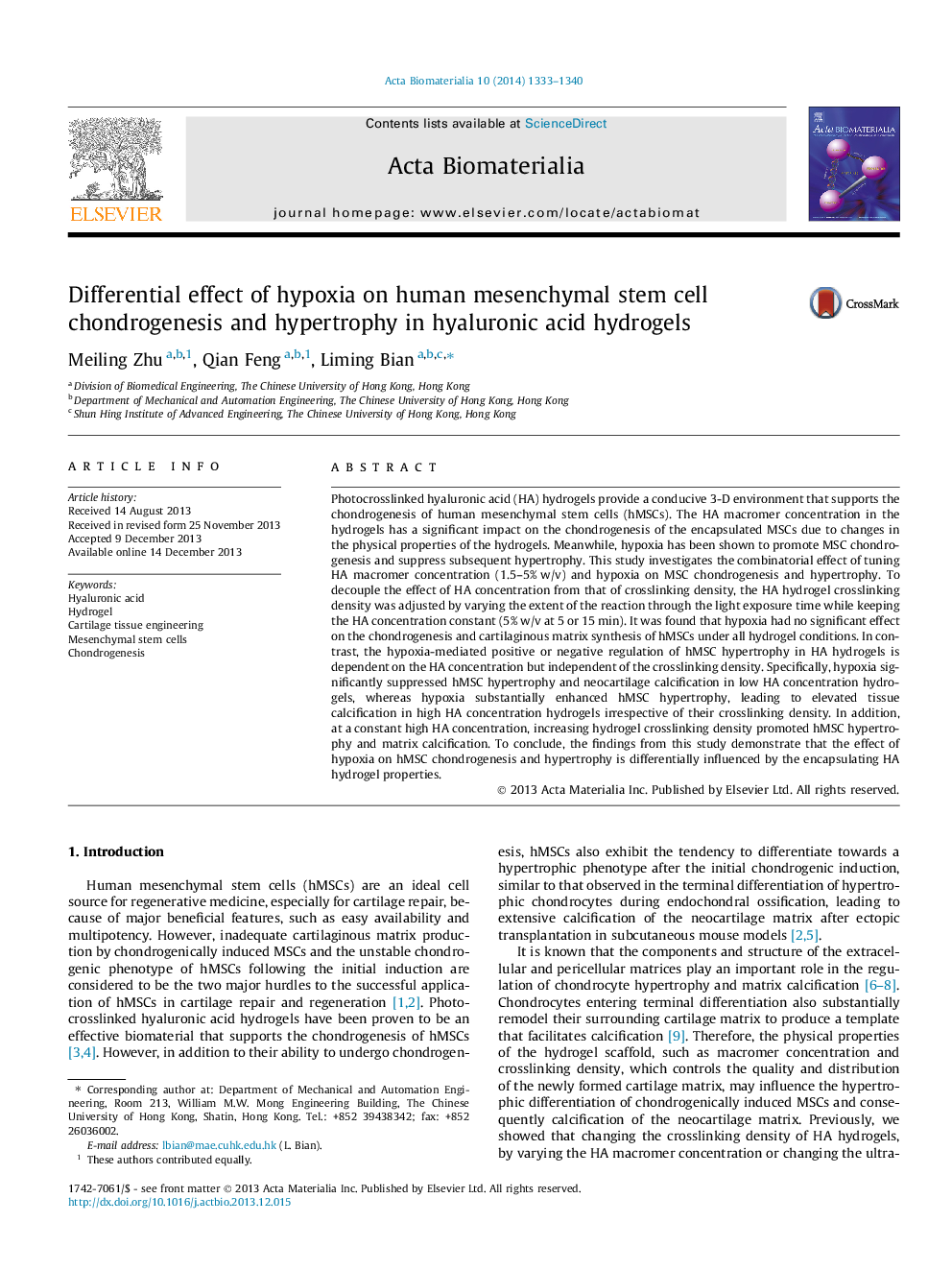| Article ID | Journal | Published Year | Pages | File Type |
|---|---|---|---|---|
| 10159285 | Acta Biomaterialia | 2014 | 8 Pages |
Abstract
Photocrosslinked hyaluronic acid (HA) hydrogels provide a conducive 3-D environment that supports the chondrogenesis of human mesenchymal stem cells (hMSCs). The HA macromer concentration in the hydrogels has a significant impact on the chondrogenesis of the encapsulated MSCs due to changes in the physical properties of the hydrogels. Meanwhile, hypoxia has been shown to promote MSC chondrogenesis and suppress subsequent hypertrophy. This study investigates the combinatorial effect of tuning HA macromer concentration (1.5-5%Â w/v) and hypoxia on MSC chondrogenesis and hypertrophy. To decouple the effect of HA concentration from that of crosslinking density, the HA hydrogel crosslinking density was adjusted by varying the extent of the reaction through the light exposure time while keeping the HA concentration constant (5%Â w/v at 5 or 15Â min). It was found that hypoxia had no significant effect on the chondrogenesis and cartilaginous matrix synthesis of hMSCs under all hydrogel conditions. In contrast, the hypoxia-mediated positive or negative regulation of hMSC hypertrophy in HA hydrogels is dependent on the HA concentration but independent of the crosslinking density. Specifically, hypoxia significantly suppressed hMSC hypertrophy and neocartilage calcification in low HA concentration hydrogels, whereas hypoxia substantially enhanced hMSC hypertrophy, leading to elevated tissue calcification in high HA concentration hydrogels irrespective of their crosslinking density. In addition, at a constant high HA concentration, increasing hydrogel crosslinking density promoted hMSC hypertrophy and matrix calcification. To conclude, the findings from this study demonstrate that the effect of hypoxia on hMSC chondrogenesis and hypertrophy is differentially influenced by the encapsulating HA hydrogel properties.
Related Topics
Physical Sciences and Engineering
Chemical Engineering
Bioengineering
Authors
Meiling Zhu, Qian Feng, Liming Bian,
